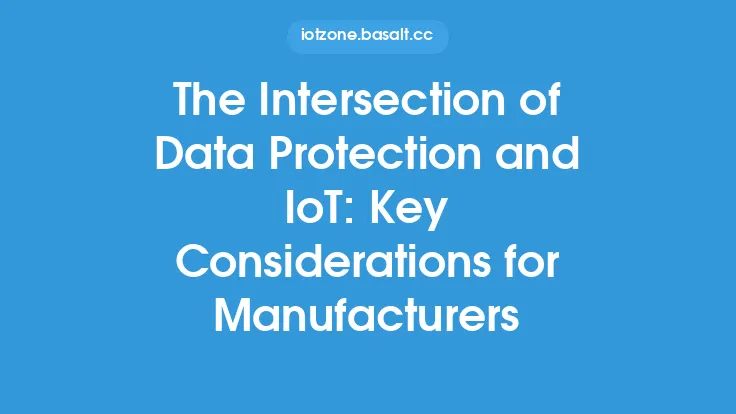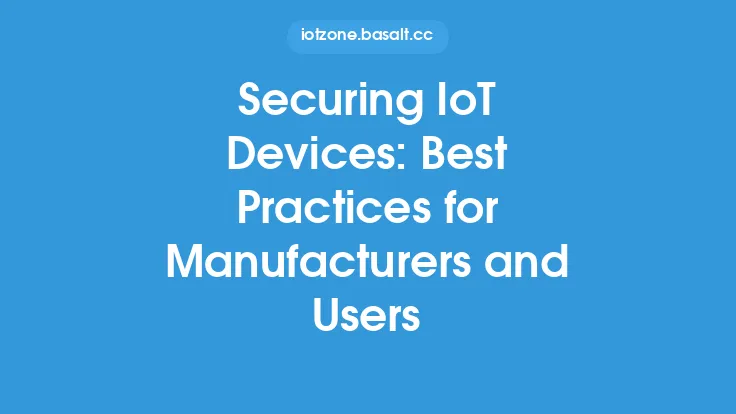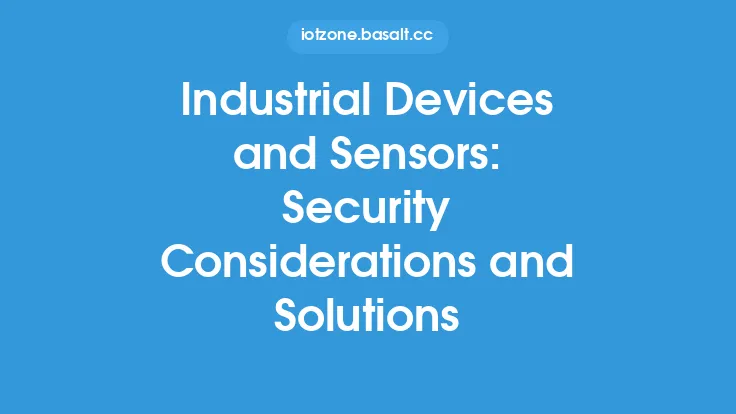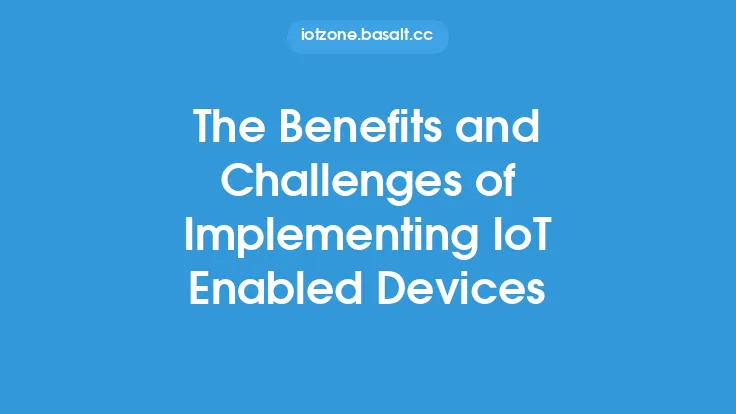The increasing proliferation of IoT enabled devices has transformed the way we live, work, and interact with one another. These devices, which range from smart home appliances to wearable fitness trackers, have made our lives more convenient, efficient, and enjoyable. However, as the number of IoT enabled devices continues to grow, so does the risk of security breaches and data compromises. Protecting user data has become a major concern, and it is essential to understand the security considerations for IoT enabled devices to mitigate these risks.
Security Risks Associated with IoT Enabled Devices
IoT enabled devices are vulnerable to various security risks, including hacking, eavesdropping, and data breaches. These risks arise from the fact that many IoT devices are connected to the internet and can communicate with other devices, making them potential entry points for malicious actors. Some of the most common security risks associated with IoT enabled devices include:
- Weak Passwords: Many IoT devices come with default passwords that are easy to guess, making them vulnerable to hacking.
- Outdated Software: IoT devices often run on outdated software, which can leave them exposed to known vulnerabilities.
- Lack of Encryption: Some IoT devices do not use encryption to protect user data, making it easy for hackers to intercept and access sensitive information.
- Insufficient Access Controls: IoT devices often lack robust access controls, making it easy for unauthorized users to access and manipulate device settings.
Best Practices for Securing IoT Enabled Devices
To protect user data and prevent security breaches, it is essential to follow best practices for securing IoT enabled devices. Some of these best practices include:
- Using Strong Passwords: Users should change default passwords and use strong, unique passwords for each device.
- Keeping Software Up-to-Date: Manufacturers should regularly update device software to patch known vulnerabilities, and users should install these updates as soon as they become available.
- Using Encryption: IoT devices should use encryption to protect user data, both in transit and at rest.
- Implementing Robust Access Controls: IoT devices should have robust access controls, including multi-factor authentication and role-based access control.
- Monitoring Device Activity: Users should regularly monitor device activity to detect and respond to potential security incidents.
Technical Security Measures for IoT Enabled Devices
In addition to best practices, there are several technical security measures that can be implemented to secure IoT enabled devices. Some of these measures include:
- Secure Communication Protocols: IoT devices should use secure communication protocols, such as TLS or DTLS, to protect data in transit.
- Device Authentication: IoT devices should use device authentication mechanisms, such as certificates or tokens, to verify device identity.
- Data Encryption: IoT devices should use data encryption mechanisms, such as AES or RSA, to protect user data.
- Intrusion Detection and Prevention Systems: IoT devices should be equipped with intrusion detection and prevention systems to detect and prevent potential security threats.
- Secure Boot Mechanisms: IoT devices should use secure boot mechanisms to ensure that only authorized software is loaded onto the device.
Regulatory Frameworks for IoT Security
Regulatory frameworks play a crucial role in ensuring the security of IoT enabled devices. Some of the key regulatory frameworks for IoT security include:
- General Data Protection Regulation (GDPR): The GDPR is a European Union regulation that sets out strict data protection rules for IoT devices.
- Federal Trade Commission (FTC) Guidelines: The FTC has issued guidelines for IoT device manufacturers, emphasizing the importance of security and data protection.
- National Institute of Standards and Technology (NIST) Framework: The NIST framework provides a set of guidelines and best practices for securing IoT devices.
- International Organization for Standardization (ISO) Standards: The ISO has developed a set of standards for IoT security, including ISO/IEC 27001 and ISO/IEC 27002.
Future of IoT Security
The future of IoT security is likely to be shaped by emerging technologies, such as artificial intelligence and blockchain. These technologies have the potential to enhance IoT security by providing advanced threat detection and prevention capabilities. Additionally, the increasing use of edge computing and fog computing is likely to reduce the risk of security breaches by minimizing the amount of data that needs to be transmitted to the cloud. As the IoT continues to evolve, it is essential to stay ahead of emerging security threats and to develop new security measures to protect user data.
Conclusion
In conclusion, protecting user data is a critical concern for IoT enabled devices. By understanding the security risks associated with these devices and implementing best practices and technical security measures, we can mitigate these risks and ensure the secure operation of IoT devices. Regulatory frameworks play a crucial role in ensuring IoT security, and emerging technologies are likely to shape the future of IoT security. As the IoT continues to grow and evolve, it is essential to prioritize security and to develop new security measures to protect user data.





